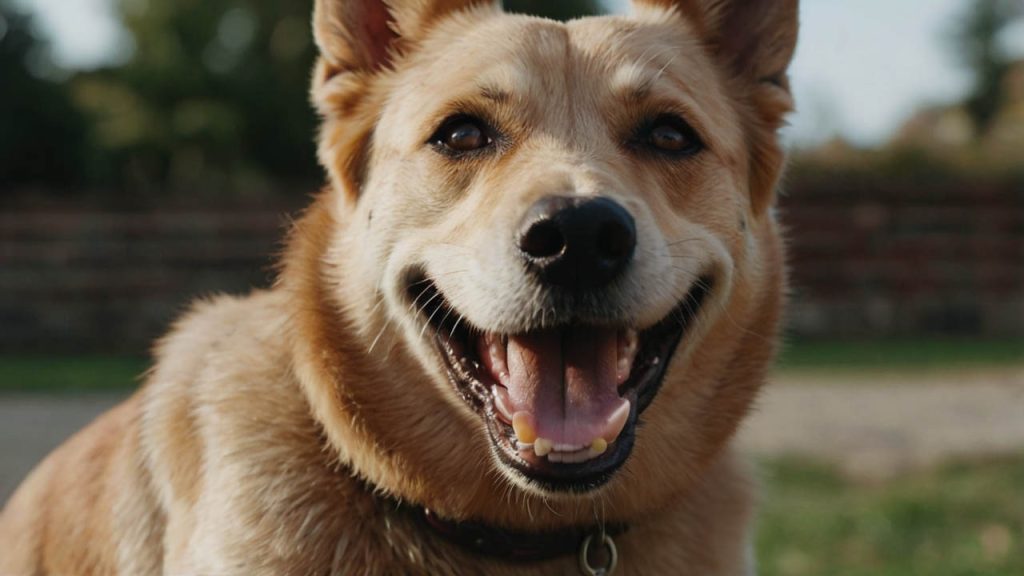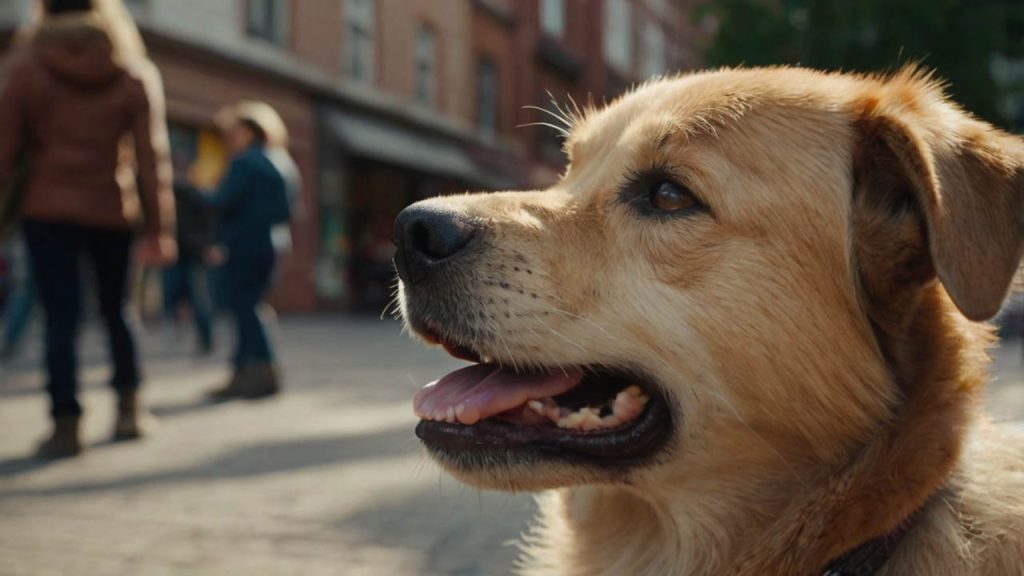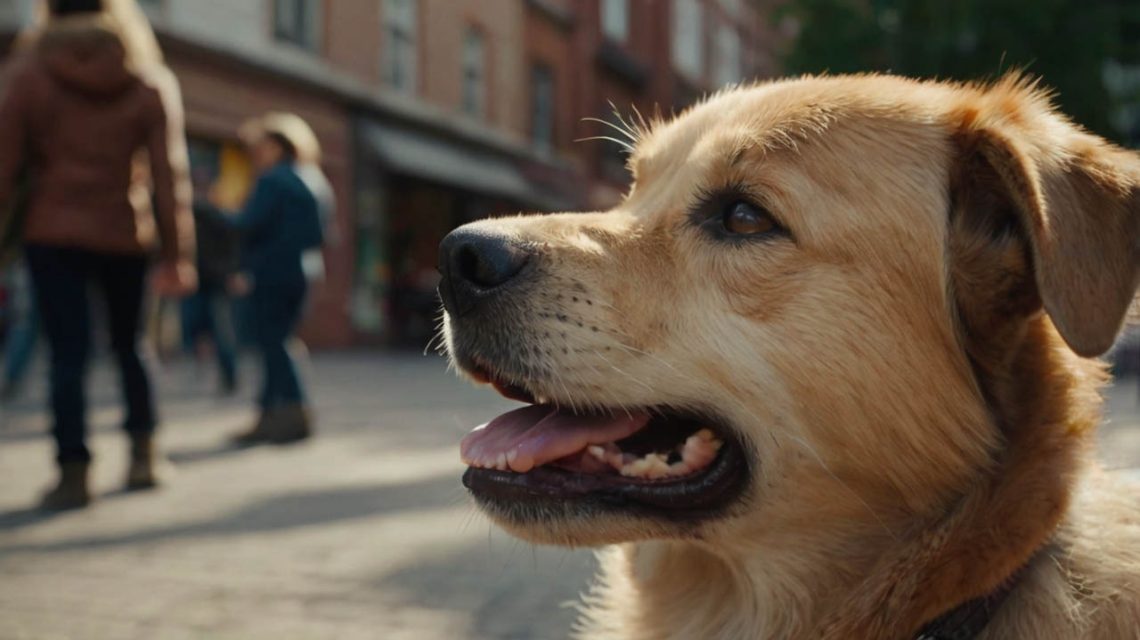The Ultimate Guide: How to Correct Dog Barking at Strangers
The story is a stressful and public one. You’re on a walk, and your dog, who is a perfect angel at home, spots a person in the distance and erupts into a loud, lunging display. This embarrassing and chaotic scene can make you dread leaving the house, and it leads to an urgent search for answers on how to correct dog barking at strangers. The most important thing to understand is that “correcting” this behavior is not about punishment; it’s about changing your dog’s underlying emotional response to the situation.
This comprehensive guide will tell the complete story of how to transform this reactive behavior into calm confidence. We will begin by exploring the crucial first step: understanding that the barking is almost always rooted in fear, not aggression. Subsequently, we will provide a detailed, step-by-step action plan that combines proactive management with the most effective, positive training methods. Furthermore, we will highlight common mistakes that can inadvertently make the problem worse. Consequently, you will be empowered with a humane and effective strategy for how to correct dog barking at strangers, allowing you to finally build a more peaceful and trusting partnership with your dog.
Why You Must Understand the “Why” to Correct Dog Barking at Strangers
Before you can effectively address the barking, you must understand the story from your dog’s point of view. A dog barking at a stranger is rarely being “dominant” or “protective” in the way we think. In the vast majority of cases, the dog is afraid or anxious.
The barking is a distance-increasing behavior. In their mind, the story goes like this: “That unfamiliar person is a potential threat! I need to bark loudly and act scary to make them go away!” When the stranger continues on their path and eventually disappears, the dog’s brain registers a success: “It worked! My barking saved me!” This accidental reinforcement makes the behavior stronger over time. Therefore, the key to how to correct dog barking at strangers is to change the story in their head.

The First Step in Correction: Proactive Management
The story of successful training always begins with preventing the rehearsal of the unwanted behavior. Every time your dog gets to practice barking at a stranger, the habit becomes more ingrained.
Optimizing Your Walks to Prevent Reactions
- Create Distance: Distance is your most powerful tool. The moment you see a potential trigger (a person) in the distance, your job is to create more space before your dog has a chance to react. This might mean crossing the street, turning around, or ducking behind a car.
- Walk at Quiet Times: Avoid the busiest times of day. Opt for early morning or late evening walks when you are less likely to encounter a lot of people.
Your goal is to keep your dog “under threshold”—the point where they can see a person but are not yet so overwhelmed that they feel the need to bark. This is the crucial learning zone. This is the foundation of how to correct dog barking at strangers.
Your Training Plan: How to Correct Dog Barking at Strangers with Positive Methods
Once you are managing the environment to prevent outbursts, you can begin the active training process. This is a story of changing your dog’s emotional response from fear to something positive.
The Power of Desensitization and Counter-Conditioning (DSCC)
This is the gold-standard, scientifically-proven method for treating fear-based behaviors.
- The Concept:
- Desensitization: Gradually exposing your dog to their trigger (a stranger) at a safe distance where they do not react.
- Counter-Conditioning: Changing their association with the trigger by pairing it with something they absolutely love (like a super high-value treat).
- The “Look at That” Game in Practice:
- Find Your Distance: Position yourself at a park bench or a quiet street corner where you can see people from a distance your dog can handle without reacting.
- Mark and Reward: The instant your dog looks at a stranger, before they bark, cheerfully say “Yes!” and immediately give them a piece of a very high-value treat (like boiled chicken or cheese).
- The Stranger Goes, the Treats Stop: When the person is gone, the treats go away.
- Repeat: Do this over and over. The story in your dog’s brain will begin to change from “Stranger = Scary!” to “Stranger = Chicken!” This is the most effective way how to correct dog barking at strangers.

What NOT to Do: Corrections That Make the Problem Worse
- Do Not Yank, Scold, or Punish: Yelling “No!” or jerking the leash only adds pain and fear to an already stressful situation. This confirms to your dog that strangers are indeed a reason to be upset and can damage your bond.
- Do Not Use Aversive Collars: Prong collars, choke chains, and e-collars do not address the underlying fear. They may suppress the barking out of fear of pain, but they make the dog’s internal anxiety much worse, which can lead to more severe behavioral problems. The American Veterinary Society of Animal Behavior (AVSAB) strongly advises against these methods.
When to Seek Professional Help
While the DSCC method is highly effective, it requires patience and skill. It’s time to hire a professional if:
- You’re finding it difficult to keep your dog under their reaction threshold.
- The barking is accompanied by serious lunging, snapping, or growling.
- You feel overwhelmed or the situation feels unsafe.
A certified professional dog trainer (CPDT-KA) or a veterinary behaviorist can provide a customized plan and in-person coaching.
You Can Change the Story of Your Walks
The story of your dog’s reactivity to strangers does not have to be a permanent source of stress. By understanding that their behavior is a cry for help, not an act of defiance, you can begin to change the narrative. Learning how to correct dog barking at strangers with positive, humane methods is a journey that builds incredible trust and deepens your relationship. You are teaching your dog that you are their protector and that the world, and the people in it, are not so scary after all.
Have you tried using counter-conditioning with your dog? Share your experiences and questions in the comments below! For more on building a confident and calm dog, be sure to read our guide on [5 Confidence-Building Games for Fearful Dogs].


